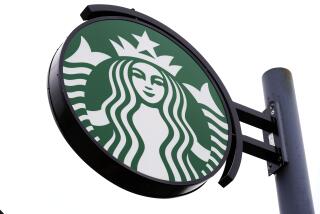Gain in Business Productivity for 1987 Slows to 0.8%
- Share via
WASHINGTON — U.S. businesses continued to improve their productivity in 1987 but were less successful in squeezing out more efficiency gains than they had been in the previous four years, the government said Thursday.
Productivity among non-farm businesses slowed to only a 0.8% improvement for the year, half the 1.6% gain of 1986, despite the lowest hourly labor cost increases in more than four decades, the Labor Department said.
And from October through December, businesses actually became less efficient rather than more so, the first quarter in which that was the case since the summer of 1986, the Bureau of Labor Statistics said.
The showing among non-farm businesses, which account for about three-fourths of the nation’s economic activity, was the worst since 1982, when a recession depressed output so much that productivity for the year declined by 0.6%.
Among manufacturers, which account for one-fourth of the nation’s economic output, productivity improvements also fell to their lowest pace since 1982, despite continued reductions in labor costs.
Last year’s efficiency gains in manufacturing amounted to 3.3%, compared with an increase of 3.7% in 1986 and annual improvements averaging 5.5% from 1983 through 1985.
The figures renewed fears of inflation and slower growth among some economists. Others, however, said the poor efficiency figures were more the result of a hiring boom in the final three months of last year, the biggest since 1984, rather than any new flabbiness.
“The way it changed was not altogether bad,” said Robert Ortner, undersecretary of commerce. “Output continued to do well and the big increase in hours worked primarily was mainly the big increase in employment.”
However, Allen Sinai, chief economist for Boston Co., said the numbers indicate several potential problems.
“If this poor performance continued, it would be highly inflationary,” Sinai said, citing a 3.7% annual increase in unit labor costs during the fourth quarter.
“So far, the implications are more negative for profits than for prices,” he said. “The boom in exports led manufacturers to hire aggressively but it wasn’t reflected in final sales.”
Hourly labor costs for non-farm businesses rose just 2.8% last year, the smallest yearly increase since the government began collecting figures in 1947, the bureau said.
But real wages in terms of buying power after accounting for inflation fell almost a full percentage point, the bureau said, adding, “there has been almost no change in real hourly compensation in a decade.”
Manufacturing output increased 4.3% last year, compared to 2.8% in 1986. To achieve the higher production, factories had to increase their hours by only 1% and they kept hourly pay raises to only 1.3%.
More to Read
Inside the business of entertainment
The Wide Shot brings you news, analysis and insights on everything from streaming wars to production — and what it all means for the future.
You may occasionally receive promotional content from the Los Angeles Times.










